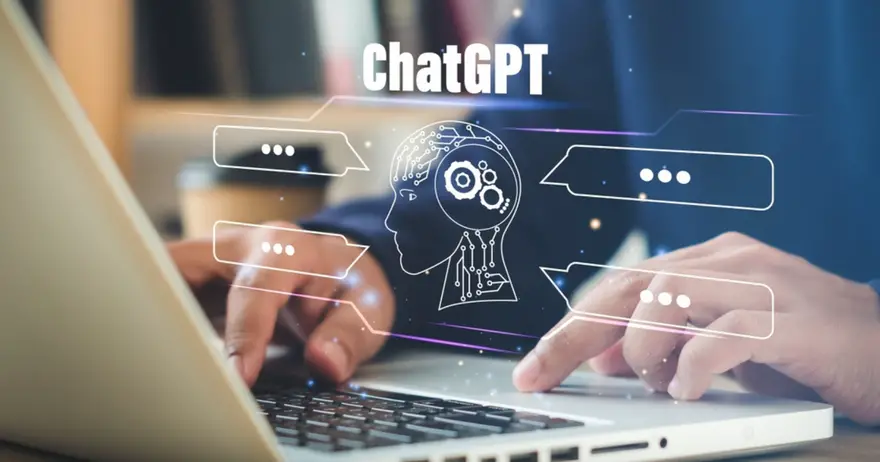If you’re reading this, you must have heard the buzz about ChatGPT and its incredible potential. But here’s the million-dollar question: how can IT professionals like you make the most of it? Well, you’ve landed in the right spot.
In this article, we’re diving deep into the world of ChatGPT and exploring the countless ways it can supercharge your IT game. Whether you’re a seasoned coder or just dipping your toes into the digital waters, this will prove to be a perfect guide for you.
Let’s get right into it.
Using ChatGPT in Cyber Security
Cyber threats are a constant concern for IT professionals. That’s where ChatGPT comes in as a valuable ally in the fight against cybercrime. So, how can IT experts use ChatGPT to fortify their cyber security efforts?
1. Threat Analysis: ChatGPT can quickly analyze and interpret massive amounts of data to identify potential security threats. By sifting through logs, network traffic, and system alerts, it can help pinpoint vulnerabilities and suspicious patterns, enabling early intervention.
2. Incident Response: When a security breach occurs, ChatGPT can provide real-time assistance in formulating incident response plans. It can suggest immediate actions to contain the breach and minimize damage, ultimately reducing downtime and potential data loss.
3. Security Awareness: Training employees in cybersecurity best practices is crucial. ChatGPT can assist by creating informative, easy-to-understand materials that educate staff about phishing attacks, password hygiene, and other security essentials.
4. Security Policy Development: Crafting effective security policies is vital for any organization. ChatGPT can help draft comprehensive policies, ensuring they cover all necessary aspects of data protection and compliance with relevant regulations.
5. Security Documentation: Maintaining up-to-date documentation of security measures is essential for audits and legal compliance. ChatGPT can generate detailed reports, making it easier to demonstrate adherence to security standards.
6. Threat Intelligence: Keeping abreast of the latest cyber threats is paramount. ChatGPT can scan the web for emerging threats and vulnerabilities, delivering timely updates that empower IT professionals to proactively secure their systems.
Remember, the effectiveness of ChatGPT depends on the quality of the prompts that are given to it. This means that ChatGPT can only generate accurate and helpful responses if it is given clear and concise prompts that are specific to the cybersecurity domain.
Using ChatGPT in QA Testing
let’s explore how you can use ChatGPT’s potential to revolutionize your QA testing processes:
1. Test Case Generation: ChatGPT can be your trusty companion when it comes to generating test cases. By providing clear, well-defined prompts, you can instruct ChatGPT to create a variety of test scenarios, helping you cover a wide range of test conditions.
2. Regression Testing: Ensuring that new code changes don’t break existing features is a QA priority. ChatGPT can assist in automating regression testing by generating test scripts and instructions, making it easier to spot unexpected behavior.
3. Exploratory Testing: Sometimes, testers need to think outside the box. ChatGPT can offer fresh perspectives and ideas for exploratory testing, helping QA professionals uncover hidden issues or edge cases.
4. Data Generation: Having realistic test data is crucial. ChatGPT can generate dummy data that closely mimics real-world scenarios, facilitating comprehensive testing without exposing sensitive information.
5. Bug Reporting: ChatGPT can assist in documenting bugs effectively. It can help QA teams create detailed bug reports with clear steps to reproduce the issue, making it easier for developers to pinpoint and fix problems.
6. Test Plan Documentation: Crafting comprehensive test plans is essential for QA projects. ChatGPT can aid in developing detailed test plans, ensuring that all aspects of the application are thoroughly tested.
7. Test Data Validation: Verifying the correctness of test data is crucial. ChatGPT can help in writing validation scripts to ensure that the test data aligns with expected outcomes.
Remember, it all starts with those well-crafted QA Prompts for ChatGPT, setting the stage for more effective responses. In QA, the quality of the input prompts can significantly impact the results you get from ChatGPT.
Using ChatGPT in Technical Writing
Regarding the IT industry, technical writing is the glue that holds everything together. Clear and precise documentation is the backbone of IT operations, and that’s where ChatGPT can lend a helping hand.
1. Generating IT Documentation: ChatGPT can be your go-to assistant for creating user manuals, product guides, and technical documentation specific to IT systems and software. By providing concise prompts, you can instruct ChatGPT to generate clear and informative content that covers complex IT concepts.
2. Editing and Proofreading IT Materials: Even the best writers can use a second pair of eyes, especially in IT. ChatGPT can review and edit your technical IT documents, suggesting grammar, style, and coherence improvements to ensure your IT content is polished and professional.
3. Explaining Complex IT Topics: Simplifying intricate technical IT subjects is a skill, and ChatGPT can help. With the right prompts, it can break down complex IT topics into digestible explanations that even non-technical readers can understand.
4. Code Documentation in IT: Developers in the IT industry, take note! ChatGPT can assist in documenting code within IT systems by generating comments and explanations for functions, classes, and algorithms. This can make your IT codebase more accessible to your IT team.
Lastly, crafting well-structured Technical Writing Prompts is critical to getting the most out of this AI tool. With that said, let’s explore how ChatGPT can be a game-changer in the world of technical writing within the IT realm.
Conclusion
In short, ChatGPT is a powerful AI tool that can be used by IT professionals to improve their work efficiency. However, it is important to test the results of ChatGPT carefully before using them in production environments.
